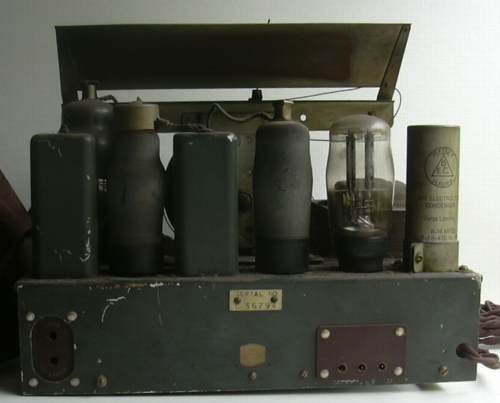
serial number C36794 chassis number 82756

Defiant Table model ac mains receiver 4 valve superhet receiver with long (700-2000m), medium (160-550m)and short wave (13-50m) bands.The valves manufactured by Mazda are as follows:ACTH1 (triode hexode), ACVP2(variable mu pentode), AC5PEN.DD(double diode pentode), UU4(double diode rectifier). The first three have 7pin British bases and the rectifier a 4pin British base. A friend who had seen my radio collection saw this sorry looking set at an auction and donated it to me. It is interesting as unusually for a set of this age it came with an operating instruction manual.
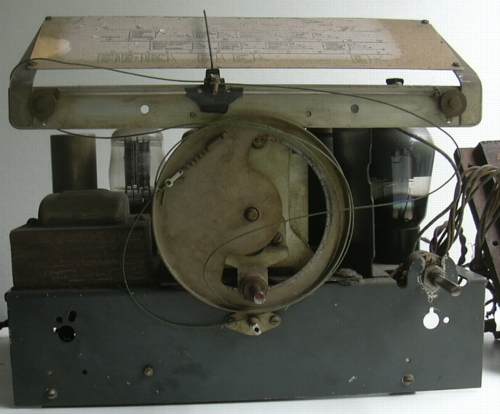
The first job was to remove the set from its wooden case. To do this I had to drill out the grub screw holding the tuning knob and the these pictures show what was inside.The scale was very dirty and the paint was flaking off, the slow motion tuning mechanism was jammed and the string was off the pulleys.

The markings on the dial indicate that it was made between 1935 and 1939 although I believe that the model MSH 934 was first manufactured in 1934. The position on the dial for Fecamp (Radio Normandie) indicates that 1938 would be more likely. I have now after several hours work on the computer made a reproduction scale.
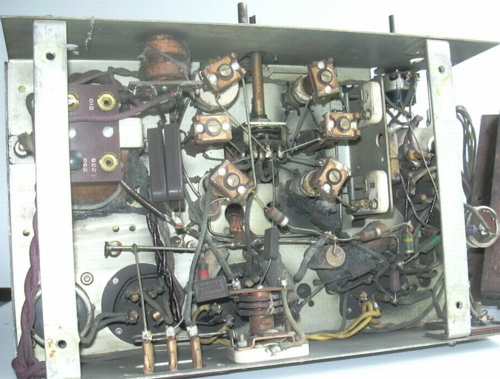
The underside of the chassis was very dirty with an accumulation of dust on most of the components.Since taking this picture I have cleaned the components to ascertain their intended values as I cannot find a circuit diagram for this radio. I doing so I discover markings on the Dubilier wax coated condensers which I guess are date codes indicating early 1938 and late 1937. The electrolytic capacitors are marked with various patent numbers the latest being granted in 1936. Apart from some soldering work on the volume control I could find no evidence of the set having had any work done on it or components replaced.The loudspeaker cone had a small perforation easily fixed with a drop of glue.The twisted 2 core mains flex seemed sound but was replaced with a 3 core plastic one and the chassis earthed.
The low voltage tubular cathode bypass capacitor was reformed using a 30 volt dc supply and after several hours the current fell to 120 microamps which I thought perfectly adequate. The 16/8 microfarad capacitor was connected to a variable voltage dc supply and energised at first with 90 volts and then as the current quickly reduced at 180 volts for several hours and finally at 300 volts on and off for three or four days until finally the lowest I could get was 550 microamps for both capacitors in parallel.
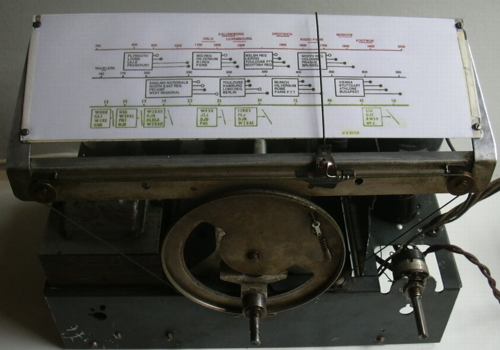
The tuning capacitor was mounted on three perished rubber bushes and this in turn mounted on a plate supporting on its underside the wave change switch and associated coils.The plate is also mechanically isolated from the chassis with four rubber bushes. The bushes under the tuning capacitor were replaced with new rubber grommets and the slow motion drive, pulleys and pointer carriage were cleaned and lubricated. The drive cord was a puzzle, it seemed to be longer than necessary, however after some experimentation I found a way that works with less cord.The new scale printed on paper placed on top of the original and protected by a thin piece of transparent plastic can be seen in the picture above.
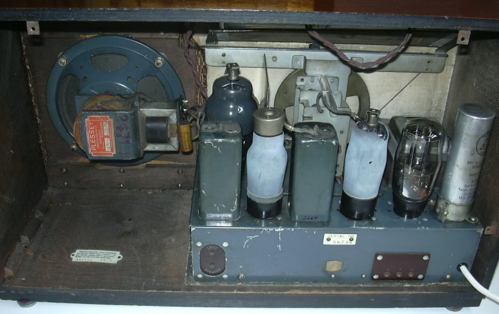
After reforming the electrolytic capacitors and checking the resistors and wax coated capacitors, the continuity and insulation of the mains transformer and the loudspeaker its transformer and magnet coils I inserted the valves and energised the radio via a variac. It worked perfectly loud and clear on all 3 bands! Nevertheless I replaced the 0.02 mfd capacitor on the grid of the output valve.
I have found that lavatory cleaner containing weak hydrochloric acid works well on removing tarnish on valve pins and the like and for removing the dirt on metallised valves (compare this picture with the one at the top of the page), if you try this trick thoroughly wash and dry the components afterwards.
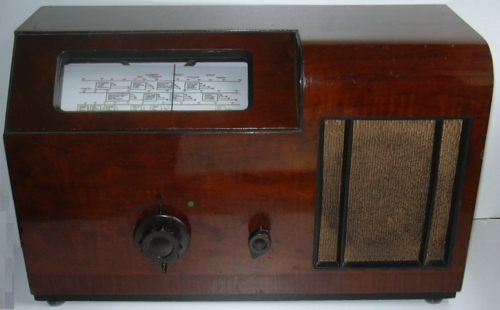
The cabinet has been washed and the worn marks around the knobs touched up with water colour paint and protected with shellac varnish when dry. Four felt feet have been fitted to replace the perished rubber ones.
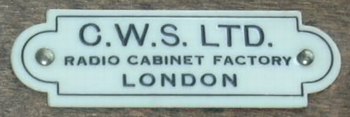
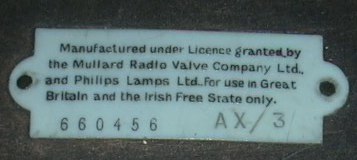
Although sold by the Co-operative Wholesale Society only the cabinets were made by CWS the radios were made for them under licence, in this case by Plessey.
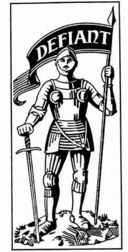
The reason for the name Defiant and the reason for the wording on the licence plate is well documented here.http://www.vintage-radio.net/forum

